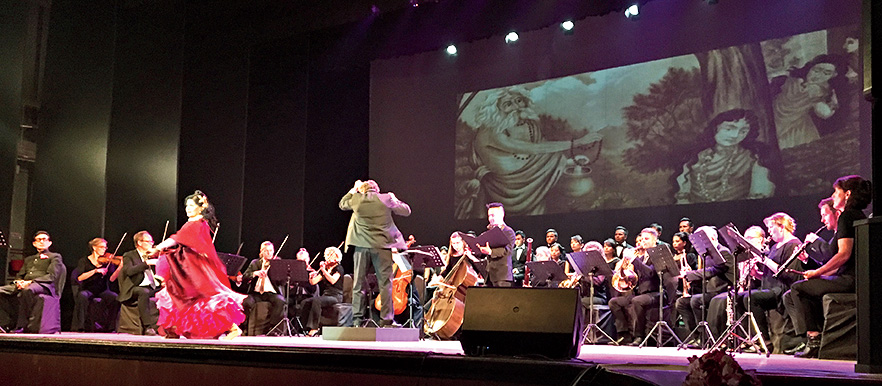A vibrant legend of love, separation, longing and catastrophe that resolves itself in the end; the tale of Shakuntala from the Mahabharata fascinated the Austrian composer, Franz Schubert. Perhaps reading it in German, one of the several European languages into which it was translated, he was moved by the range of emotions the pauranic romance offered. Slowly, a manuscript for an opera began to emerge. But Schubert was not destined to complete it. He died at the age of 31, leaving only the glimmerings of a great work in his opera-fragment.
Calcutta recently witnessed the concert version of Shakuntala as completed by the Gerald Wirth, the Austrian composer and president and artistic director of the Vienna Boys Choir. He brought together an Indian choral group along with a 23-member chamber orchestra from Austria to present a majestic opera in the land of Shakuntala. For many in the audience at Kala Mandir that evening, it was the first taste of opera and the experience was a singularly grand one. The Kathak dancer, Shovana Narayan, was meant to add another dimension to the work with her interpretation of the German songs at the event that was being presented by the Austrian Embassy and its Cultural Forum as a display of the cultural ties between India and Austria.
The novelty of the presentation and the enormous scale on which it was mounted was enthralling. The young members of the Shillong Chamber Choir sang Schubert impressively and effortlessly. Their professionalism and the ease with which they rendered the songs of the various characters and performed as an ensemble with the chamber orchestra in a seamless blend characterized the production.
The amalgamation of cultures, an ambitious project in itself, was doubtlessly further complicated by the lack of time available to the musicians for joint rehearsals. It is to the credit of the artists, however, that the boundaries of time, genre and geography fell away and what was presented to the audience was an artistic whole that was greater than the sum of its parts.
But the area in which the production was severely lacking was dance. Shovana Narayan, in bizarre Indo-western costumes that were neither here nor there, made several appearances as Shakuntala. The choreography lacked imagination. To be fair to the dancer, the Kala Mandir stage, after accommodating the large troupe of musicians, barely had space for a dancer to make an impactful presentation. Intended to supplement the communication as the lyrics of the songs were in German, the dance never really built any bridges that the music could not have done. It was mere visual distraction.

Still from the production of Shakuntala presented by Austrian Embassy and its Cultural Forum Kathakali Jana










